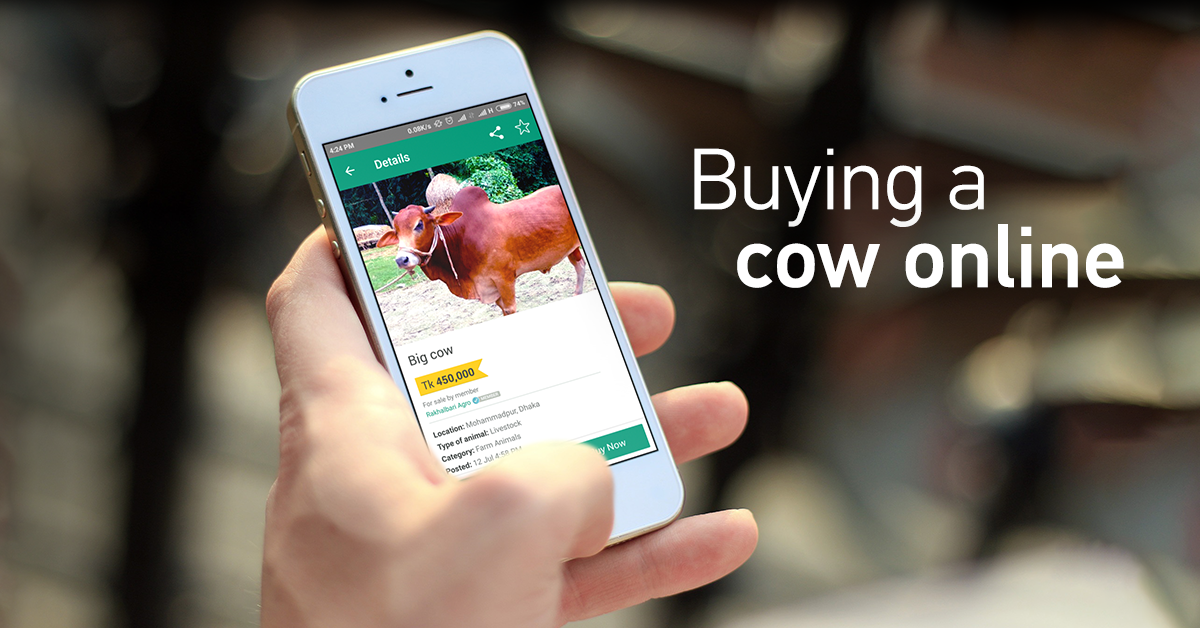Buying and Nurturing Sacrificial Animal for Qurbani

We have many responsibilities to handle during Qurbani every year. There are important tasks like buying and nurturing the sacrificial animal and the post-sacrifice cleaning up. Tasks during Qurbani are always heavy-duty therefore, some of these tips might come in handy help you be ready for all the challenges to come –
Going to a Qurbani haat
Take time when you decide to go to a Qurbani haat; you should examine carefully and identify a suitable and healthy animal for sacrifice. Consider taking someone to the haat with you who is an expert in purchasing Qurbani animals. Also, you should take someone strong and healthy to help you bring your sacrificial animal back home. Wear clothes that are comfortable and expendable when you go to a haat, since there are plenty of dirt and dung along the way waiting to ruin your nice clothes. Expect a lot of crowd in the haat so pay your haat-taxes duly and be careful with the money you would carry.
Identifying a healthy animal
Inquire the age of a sacrificial animal from the cow handler. Remember, a sacrificial cow should be a minimum of 2 years old and for goats, the age should be at least 6 months. If possible, go to the haat at day time so that you can check the animal properly in daylight. Check its skin and body thoroughly for any kind of injuries; check for bruises or tears in the skin, cuts in ears or tails, broken horns or hoofs, tongue-sores etc. If the hump of a cow is thick and tight, it means that the cow is healthy. An easy way to identify an unhealthy animal is that the animal would be not eating when offered food. Also, a healthy animal’s nose should be wet and glossy.
Try to buy a local cow. Because cows that travel from beyond the borders are often tired and bruised. You won’t be able to identify a sick cow if it is already tired. Also, it is wise not to buy a heifer or a calf. If you must, then talk to a veterinarian and make sure that the animal you want to buy is not pregnant. In Islam, it is not permissible to sacrifice a pregnant animal.
The meat of a steroid-infused animal contains a high level of steroid water, even after cooking it on high heat! This meat can cause great damage to a human body. So you shouldn’t buy an animal infused with hormones. This type of animals is usually very lethargic and sluggish since they have trouble walking properly. They have thick thighs and their bodies are bloated with water. If you press any fleshy part of an animal’s body it will dent in for a while.
What to feed a Qurbani animal?
Only buying a sacrificial animal is not enough, it is our religious and moral responsibility to take care of that animal. Sacrificial animals are usually bought two to three days before Qurbani. We shouldn’t feed fermented food to the sacrificial animal after buying it to prevent it from bloating or food-poisoning. Buy grainy pellet-food available in marketplaces, which is good for the animal. If your animal is not used to having this kind of food, then try feeding it slowly and if it doesn’t want to eat pellet-food at all, try feeding it wheat-bran of good quality. However, at most two KGs of wheat-bran can be fed to a sacrificial animal.
Whichever food you choose to feed your animal, you must provide a clean and hygienic tank and enough safe water with it. To help it digest the food properly you can feed ginger-juice or medics like Digivet/Digitop. If your animal starts bloating you can feed it some linseed oil to get good results but anything you do, you must consult a good veterinary doctor or a specialist beforehand.
Before and after the Qurbani
As we ought to take the life of an innocent animal, the process of Qurbani should be made with extreme care to ensure that the least pain is inflicted. So the preparations should be taken early. Sharpen the knives and choppers to make Qurbani easier and faster on the animal. Sharp ‘U’ shaped knives should be used to skin it.
Talk with your butcher beforehand to avoid trouble. Buy bleaching powder to scatter on remaining blood and collect mats and scales for dealing with the huge amount of meat.
The sacrificial animal should be bathed and fed properly before the Qurbani. It should drink plenty of water before the sacrifice. It’s easy to skin the animal if it is well-hydrated. Before you lay the living animal on the ground, be careful not to wound it. The skin can be damaged if you aren’t careful.
After the sacrifice, don’t leave the blood, waste and remains unmanaged. This pollutes the environment and the stink is unbearable. Bury the waste in the ground and scatter bleaching powder on the remaining blood in that place. If every one of us tries to take responsibility, our environment will be clean and stench-free on every Qurbani up-ahead.
| Farm Animals in Dhaka | Farm Animals in Chattogram |
| Farm Animals in Dhaka Division | Farm Animals in Khulna Division |
| Farm Animals in Sylhet | Farm Animals in Chattogram Division |










